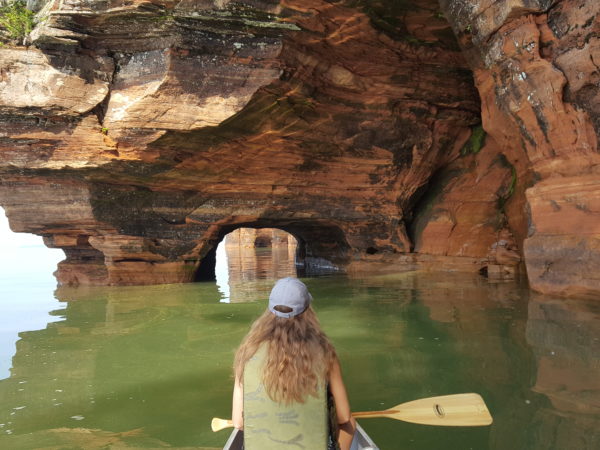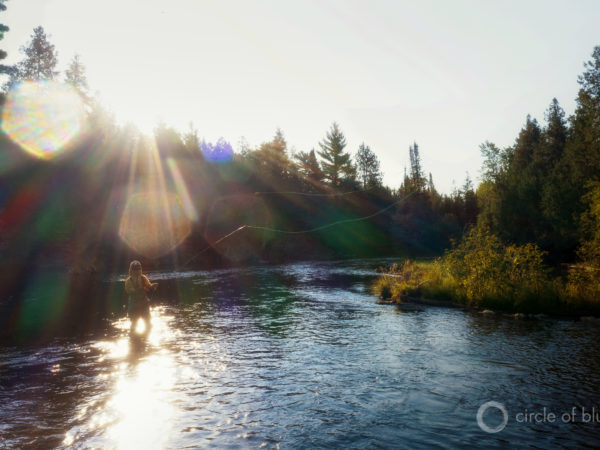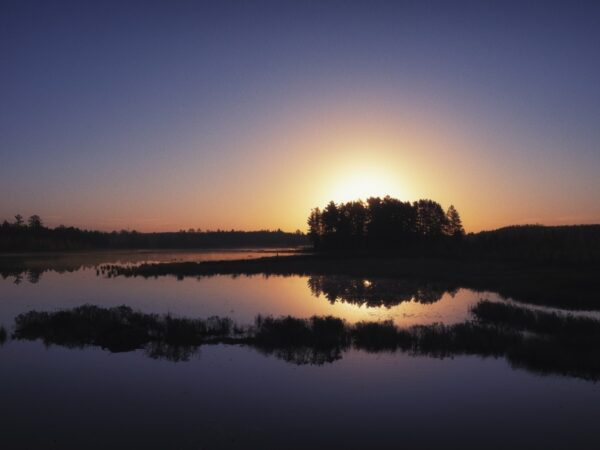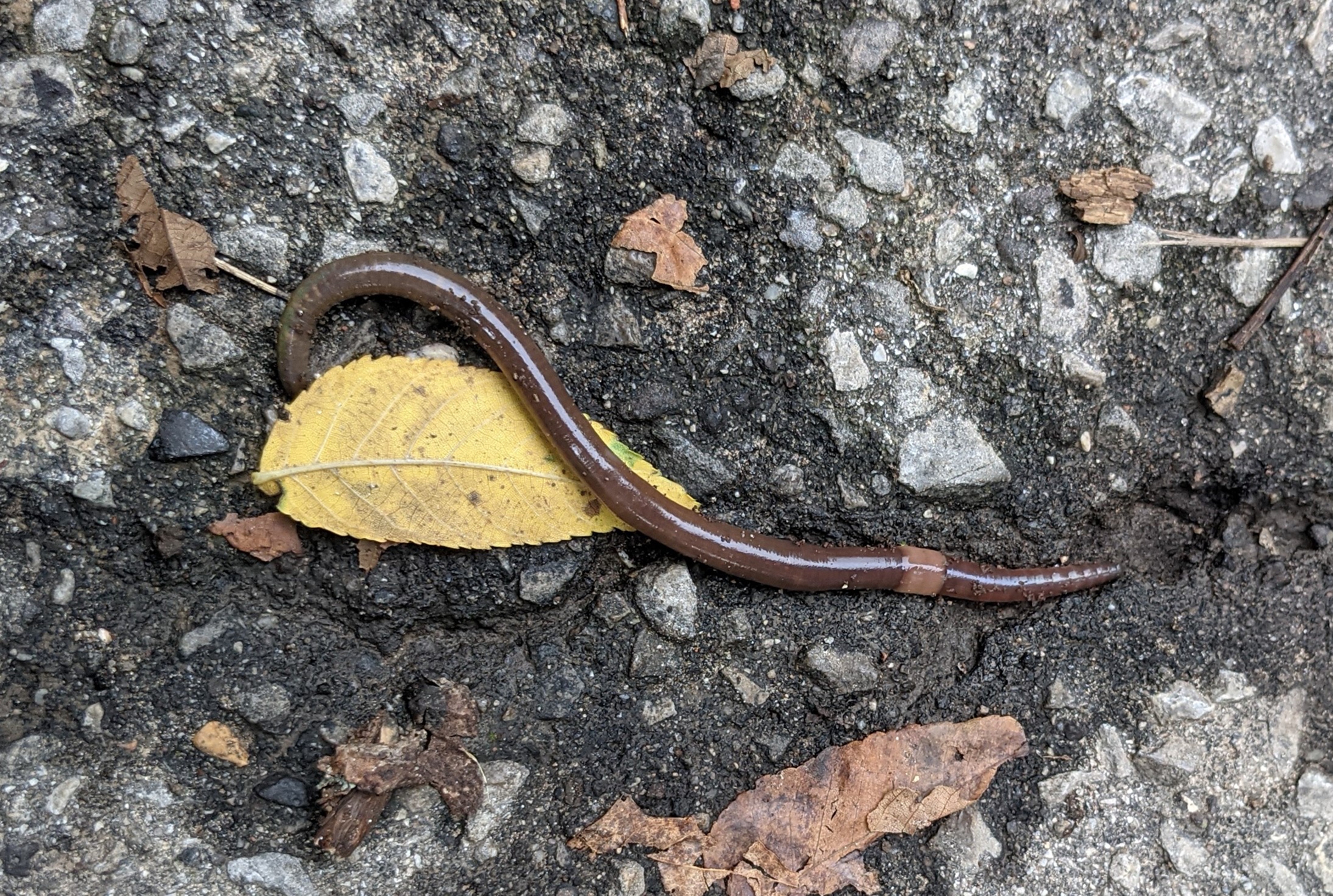
Science Says What? is a monthly column written by Great Lakes now contributor Sharon Oosthoek exploring what science can tell us about what’s happening beneath and above the waves of our beloved Great Lakes and their watershed.
Invasion of the earthworms! It sounds like a bad Hollywood movie, but science can be stranger than fiction.
Like most people who grew up in the Great Lakes region, I thought the worms in my garden were native and a sign of soil health. You know the ones – reddish, brown and ranging from about four to eight inches.
Turns out the story is more complicated and far more interesting.
As I recently discovered, my garden worms hail from Europe and their Latin name is Lumbricus terrestris. Most of us know them as dew worms or nightcrawlers, a popular bait worm.
The first wave of nightcrawlers arrived in North America from Europe about 400 years ago. They hitchhiked with settlers’ crops and garden plants and the worms have been quite happy here ever since.
But nightcrawlers were not the first earthworm invader, nor the last. There are now more than 22 non-native worm species from Europe and Asia in the Great Lakes region. The latest arrivals consist of several types of jumping worms from Asia that twitch and leap like a snake when disturbed.
As the cumulative impact of all these worms becomes clearer, scientists are sounding the alarm about their effect on hardwood forests.
Researchers with Michigan Technological University recently suggested invading earthworms are responsible for maple tree deaths in the Upper Peninsula, northern Wisconsin and eastern Minnesota.
Normally gardeners and farmers love to see earthworms because they create holes in the soil, making it permeable and allowing rain and air to seep in. What’s more, the worms deposit nutrients that plants need to grow. They do this by eating dead vegetation. As a worm’s gut digests these leaves and twigs, it sloughs off nutrients such as nitrogen and phosphorus in its feces. When they poop, the worms leave those nutrients behind.
So in farmers’ fields and backyard gardens – places chock-full of non-native plants – these worms are in fact beneficial, says Michael McTavish, a post-doctoral fellow at the University of Toronto’s Smith Forest Health Lab, and an expert on invasive worms.
The problem starts, says McTavish, when humans help worms travel into hardwood forests. We do this when we move plants with soil from one area to another, when we dump bait buckets, or even via worm-cocoon infested dirt on our boot treads and car tires.
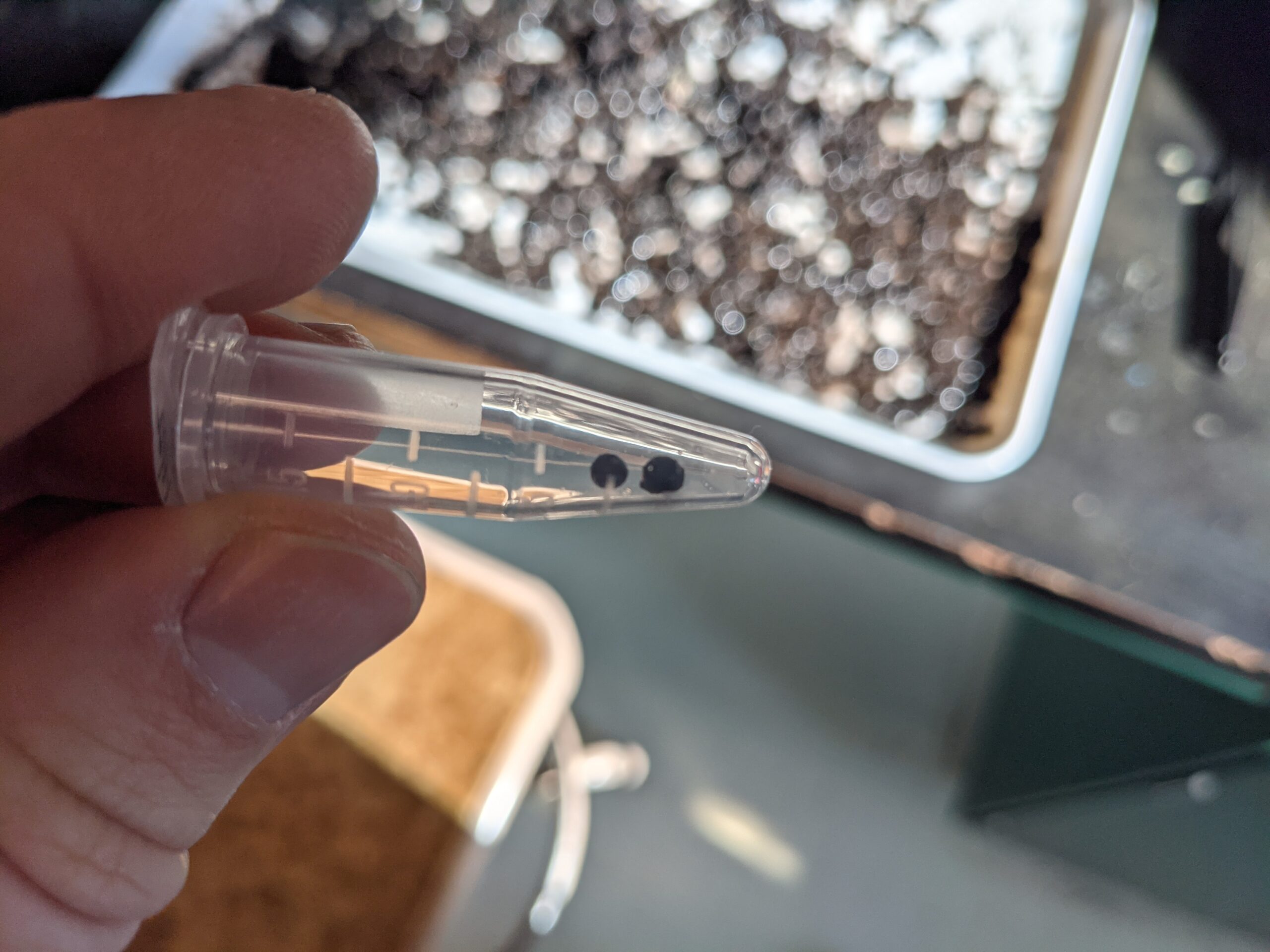
Jumping worm cocoons. (Photo Credit: Michael McTavish)
So what’s the big deal?
Once established in a hardwood forest, the invading worms’ numbers and appetites are a problem. There they quickly breakdown plant debris on the forest floor, releasing pulses of nutrients.
The problem is that hardwoods, including maples, are used to a slow drip of nutrients. What they can’t take up is quickly washed away during the next rainfall or used by non-native plants better adapted to nutrient pulses.
That’s not all. By eliminating this litter too quickly, invasive earthworms are removing the material that many native plant seeds like trilliums and blue cohosh need to get their start in life. Without leaf litter the forest floor also heats up and loses moisture and the soil is more vulnerable to erosion and freeze thaw cycles.
Any native seeds that do manage to grow into seedlings are more visible on the bare forest floor, which makes them easy pickings for browsing deer.
Forest evolution happens slowly. Unlike in Europe and Asia, our wooded areas have simply not had enough time to evolve to handle these changes.
The forests that are seeing the most impacts are those with trees that shed leaves low in lignins and tannins. That means maple, black locust and willow.
If their favorites aren’t available, worms will make do with leaves that have higher levels of lignins and tannins – birch and ash, then oak and beach. They don’t particularly like coniferous needles because they’re waxy and tough and have fewer nutrients.
“If you give them a buffet, they will pick and chose,” says McTavish. “But they’ll eventually eat everything, even coniferous needles.”
What about native earthworms?
Canada and the northern U.S. used to have native earthworms. But during the last glaciation 20,000 years ago they were scraped away – along with most of the fertile soil.
Small pockets survived here and there, but when the glaciers retreated north about 11,000 years ago, the surviving native worms mostly stayed put. Without human intervention, they are slow movers, advancing just over half a mile every 100 years.
In Ontario, scientists believe there are just two native species, but they are exceptionally rare. Throughout the whole Great Lakes region, there are just a handful of native worms. The vast majority are invaders.
In fact, there are exotic earthworms on every continent except Antarctica and in nearly every type of ecosystem, says McTavish. It’s such a widespread invasion that some researchers have started calling it a “global worming.”
Some scientists have suggested chemical poisons, or biocontrol using the predatory New Zealand flatworm or parasitic flies, but these could have unintended consequences and so haven’t received much support.
“There’s really no going back,” says McTavish. “We can’t remove them completely and there’s no real safe or targeted way to get rid of them. The reality is that our forests will probably look different.”
Yet the situation may not be as dire as it sounds.
We don’t yet know enough about how our forests are changing as a result of these earthworms from elsewhere. For example, the worms are a high quality, protein-rich food for robins, salamanders and bears. And some plant seeds germinate better after passing through a worm’s gut.
So it might be better to stop thinking of them as scary invaders, says McTavish.
“There’s a new soil ecosystem engineer here, even if it’s ‘not supposed to be,’” he says. “At what point do we think of them as a normal part of soil biodiversity?”
Catch more news at Great Lakes Now:
Science Says What? The weight of the world rests on a small Canadian lake
Featured image: Jumping worm. (Photo Credit: Michael McTavish)
1 Comment
-
It is a relief to read about the invasive jumping worms in a publication referencing Michigan. We experienced a catastrophic infestation beginning in 2020 brought into our wooded area with more than 20 cubic yards of wood chips from a landscaping supplier we had used for decades. Frantic identification, queries to every state agency and university department and even the county drain commission brushed us off. Many did not know anything about them and those that were aware said there was nothing we could do. Well there is no known safe control, but I am still of the opinion that it is the responsibility of all who are aware of the jumping worms to spread information about identifying them, sharing their impact and mitigation possibilities before horrific populations are established. Their propagation should be explained. People need information.


